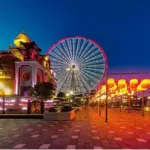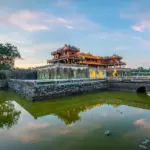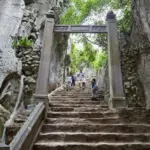Buddha Night Ceremony in Da Nang by Ovuigo: Enlightenment and Tradition in Vietnam’s Temples
What is Buddha Night Ceremony and Its Spiritual Significance?
Buddha Night, commonly known as Vesak or Buddha Purnima, is the most revered holiday in the Buddhist calendar. It commemorates the birth, enlightenment, and passing of Gautama Buddha. In Da Nang, this event embodies centuries of ritual practice, mindfulness, and compassion. The spiritual significance lies in its focus on enlightenment through meditation, prayer, and community. Stretching from dusk till midnight, the ceremony marks the symbolic journey from daylight—signifying ignorance—to night, illuminating wisdom and tranquility.
Central to the Buddha Night meditation ceremony are acts of silent reflection and tranquility. Temples, monasteries, sanctuaries, shrines, and pagodas welcome devotees seeking spiritual purification. The community comes together for nighttime rituals, honoring the Buddha statue with lotus flowers, candles, and incense—symbols of enlightenment and clarity. Offering prayer beads and gentle chants, worshippers collectively express the prayer for the end of the day, fostering compassion and inner peace.
This ceremony serves as a compass for anyone searching for spiritual meaning in the noise and darkness of daily life. Through carefully choreographed rituals, participants glimpse Nirvana—a state of ultimate peace.
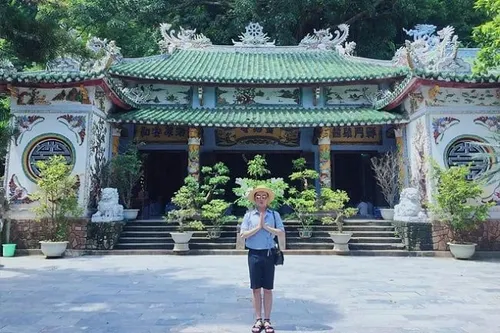
Key Rituals and Nighttime Activities in Buddhist Temples with Ovuigo
Buddhist temples in Da Nang transform during Buddha Night. As the sky darkens, devotees move into meditation halls for quiet mindfulness and deep meditation. The evening typically begins with communal chanting of Buddhist sutras, coordinated by the sangha (monastic community) and temple abbot.
One of the most visually arresting rituals is the lotus and candle offering. Lotus flowers—holonyms for purity—are presented beside the Buddha statue, surrounded by rows of flickering candles and fragrant incense. At Non Nuoc Pagoda (Google Map), for instance, monks and lay devotees light hundreds of candles in a moving act of worship.
Temple illumination follows, where lanterns in every hue and size are strung along walkways and prayer halls, symbolizing the dispelling of ignorance with wisdom. At designated times, participants join in silent or guided group meditation, focusing on breath and the impermanence of existence—a core Buddhist teaching.
Rituals might also include:
- Incense offering: Wafting prayer smoke carried upward as spiritual petitions
- Releasing glow lanterns: Floating lights into temple ponds or nearby rivers as metaphors for letting go of suffering
- Special night-only offerings: Rice, fruits, or vegetarian meals for monks and the poor
Each step—down to quiet footsteps in the pagoda garden—reflects devotion to tranquility, mindfulness, and celebration of Buddha’s enlightenment.
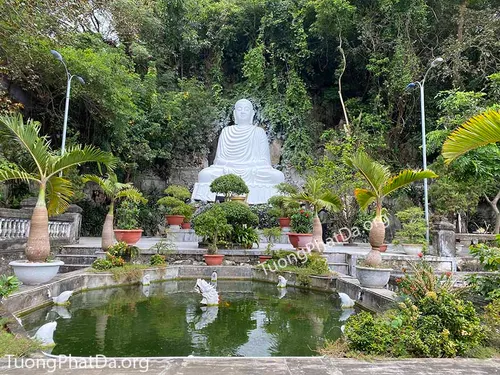
The Role of Illumination: Lanterns, Candles, and Temple Lighting
Illumination is the heartbeat of Buddha Night. In Da Nang, temples such as Linh Ung Pagoda and Non Nuoc Pagoda (Google Map) glow with the gentle, golden light of lanterns and candles. Light is never merely decorative—it is a direct symbol of the Buddha’s wisdom, the end of darkness, ignorance, and suffering.
The lantern procession often begins near the river or temple steps. Devotees, both children and elders, carry handmade lanterns—sometimes shaped like lotus flowers—along carefully chosen paths. Lanterns are released onto water, their gentle drift a symbol of the journey toward Nirvana.
Candles line shrines, prayer halls, and Bodhi trees, standing as sentinels of hope and clarity. Special incense and prayer beads accentuate the sacred atmosphere, their fragrance and tactile presence linking the physical and spiritual plane. Each candle, each lantern, is a prayer embodied—a testament to the collective wish for enlightenment, wisdom, and compassion for all beings.
Illumination at Buddha Night contrasts with the daylight’s absence, pushing back the night’s darkness. Temples become sanctuaries of light, and participants are immersed in ritual activities that blend tradition with meaningful symbolism.
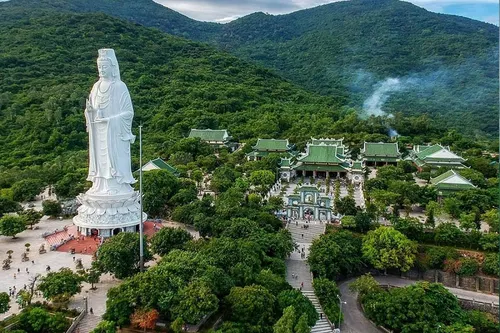
Community Involvement: Monks, Devotees, and Collective Meditation
Buddha Night by Ovuigo is as much about community as it is about personal reflection. At the heart of the ceremony are the monks—spiritual leaders, custodians of Buddhist heritage, and guides in the path toward tranquility and compassion. But the celebration belongs to everyone.
Devotees, ranging from long-time practitioners to first-time visitors, join hands in communal meditation, chanting, and offerings. The inclusive spirit ensures that all can participate, regardless of background. For many, it is a chance to connect deeply with Buddhist teachings, surrounded by the peaceful, mindful presence of the sangha and other worshippers.
Monks lead nighttime chanting, teach Dharma talks about the significance of Vesak, and offer blessings—often sprinkling holy water as a symbol of spiritual renewal. Children light candles, elders prepare vegetarian food offerings, and volunteers decorate the temple grounds and prayer halls.
This unity is felt most vividly during collective meditation sessions. All distractions are set aside, and silence envelops the group. The combined focus amplifies the experience, promoting a pervasive sense of peace—an illustration of Buddhism’s promise that collective mindfulness fosters harmony and compassion in the broader community.
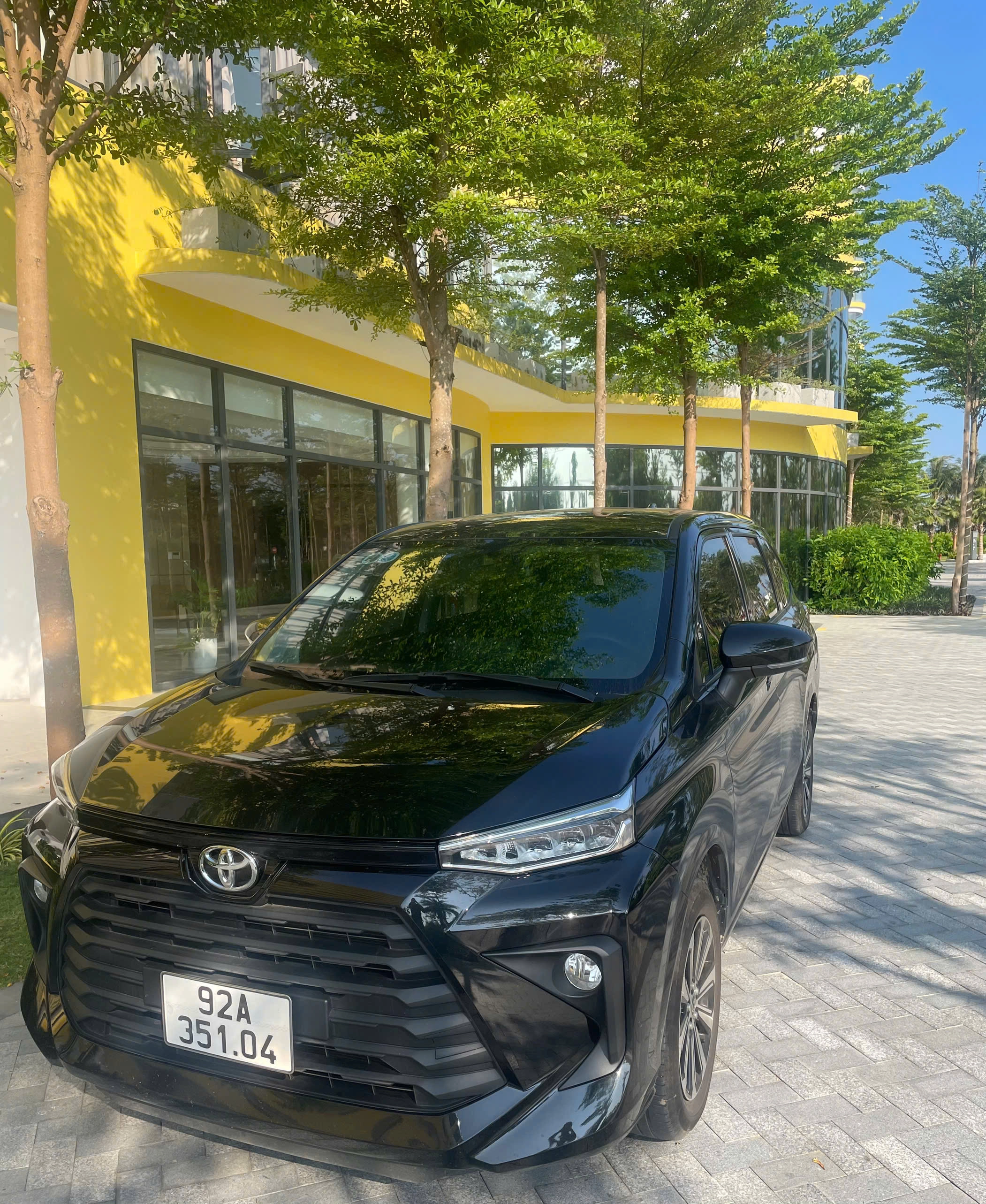
Unique Features and Traditions of Buddha Night in Da Nang
Da Nang’s coastal setting and vibrant Buddhist heritage infuse Buddha Night with unique local traditions. At Non Nuoc Pagoda and Linh Ung Pagoda (Google Map), sacred art displays and mandala sand paintings are unveiled only during this festival. Devotees can witness unique chants and drum processions, echoing along the Marble Mountain’s caves.
Glow lanterns constitute a distinct Da Nang feature. Released along the Han River or temple ponds, their shimmering reflections multiply the festival’s light, mirroring prayers drifting into the night sky. The Bodhi tree—another rare attribute—often stands illuminated by candles and artful decorations.
Riverfront temples, such as Quan The Am Pagoda and Tam Thai Pagoda, offer a tranquil setting for riverside meditation and floating flower rituals. Night-only offerings and special incense, available exclusively for Vesak, distinguish Da Nang’s Buddhist night festival from celebrations elsewhere in Vietnam.
Artisans create elaborate lotus flower arrangements and prayer beads for sale or donation. Local food stalls serve vegetarian meals, transforming temple courtyards into lively cultural gatherings that blend spirituality with community festivity. While admission to most temples on Buddha Night is free, donations for maintenance and charity programs are warmly encouraged.
How to Participate in a Buddha Night Ceremony with Ovuigo: Practical Guide
Participating in a Buddha Night Ceremony in Da Nang is accessible and rewarding. Here’s how to make your experience profound and respectful:
Preparation
- Choose your temple: Non Nuoc Pagoda (Google Map), Linh Ung Pagoda, Quan The Am Pagoda and others are ideal (no entry fee, donations encouraged)
- Check dates and times: Buddha Night (Vesak) often coincides with the full moon in May. Temples post ceremony schedules in advance.
- Bring offerings: Fresh lotus flowers, candles, incense, or small donations for temple upkeep
Attire and Etiquette
- Wear modest clothing: Long sleeves and trousers or a traditional white robe (often available to borrow)
- Arrive early: Allow time to adapt to the tempo and atmosphere
- Observe silence and respect: Follow temple signs, avoid loud conversation, switch phones to silent mode
During the Ceremony
- Follow monks’ guidance: Participate in group chanting, meditation, and lantern processions when invited
- Offer prayers: Place your lotus flower and light your candle at designated spots
- Engage in group meditation: Find a quiet spot, focus on your breath, and join in collective tranquility
- Photography: Respect restrictions; some prayer halls prohibit flash or photography
Tips for Newcomers
- No experience is required—all faiths and backgrounds are welcomed
- If unsure, observe and emulate those around you
- Take time to explore sacred art, Bodhi trees, and mandala displays unique to Da Nang
Attending a Buddha Night ceremony provides a firsthand experience of tranquility, compassion, and mindful community. If you want to plan this profound journey, reach out to us via WhatsApp +84868319161. We don’t run tours — we craft experiences. Each journey is a story written just for you, designed for those who wish to explore Vietnam slowly, deeply, and meaningfully. No fixed itineraries. No crowds. Just you — and the moments that truly matter.
For more information, in-depth local tips, and personalized spiritual discovery in Da Nang, visit ovuigo. Don’t forget to book your unforgettable retreat at The Manor Hoi An, Hola 1, or Hola 2 for an authentic and tranquil Vietnamese stay.

